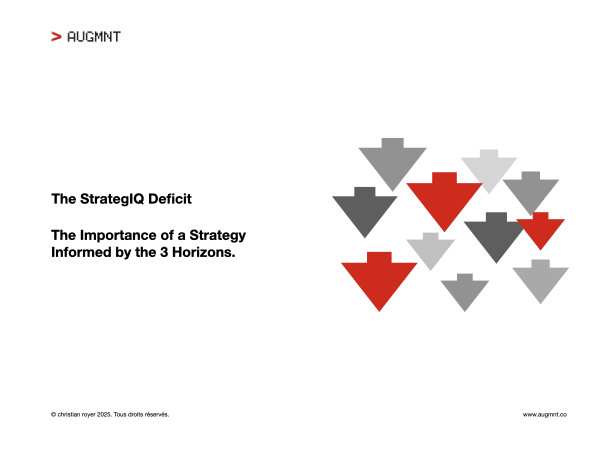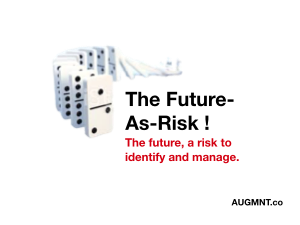StrategIQ Risks
DynamIQ Continuity
Strategic Risk Management Begins at the End — Not the Beginning
Stephen Covey’s timeless principle, “Begin with the end in mind,” is not just personal wisdom—it’s strategic necessity. In the context of Strategic Risk Management (SRM), this means organizations must anchor their risk practices in foresight: envisioning long-term outcomes, future operating conditions, and the external forces likely to reshape their trajectory.
Strategic Risk Management is not only about immediate disruptions—it is also about the threats and opportunities that affect the organization’s ability to realize its long-term objectives. It is future-facing by definition. Therefore, effective SRM cannot emerge from reactive analysis or operational firefighting. It must start from the future and work backwards.
This aligns precisely with the foresight mindset:
- Scenario planning is a classic foresight tool that embodies beginning with possible futures to test resilience and response pathways.
- The Kodak example underscores the consequences of ignoring strategic foresight—Kodak failed not because it couldn’t see the future, but because it chose not to act on it.
- Foresight encourages proactive integration of risk thinking into strategic planning. That integration only makes sense if you’re anticipating the long arc, not just responding to present threats.
Foresight is Strategic Risk Management’s Missing Premise.
Foresight enables you to:
- Surface emerging risks before they materialize.
- Spot used futures—assumptions from the past that no longer hold.
- Understand generative futures—new conditions that could create opportunities if acted upon early.
- Avoid the trap of optimizing obsolete strategies.
Strategic Risk Management, when properly executed, is not a defensive exercise. It is an offensive capability—a way to create space for bold, adaptive moves by continuously aligning today’s actions with the changing shape of tomorrow.
So when organizations say they manage “strategic” risk, the real question is:
Which future are they managing? The one they inherited—or the one they dare to shape?
At AUGMNT, along the years, we have developed a proprietary approach to Strategic Risk Management that is not siloed but well integrated in the 3 horizons and traditional risk management activities.
DynamIQ Continuity
Continuity, Redefined
The traditional approach to continuity is necessary but incomplete. It focuses on recovery — ensuring that operations can resume after disruption and that critical processes continue within acceptable limits. While essential, this view is static: it restores the past rather than securing the future.
DynamIQ Continuity extends the logic of continuity into the strategic realm. It safeguards not just operational uptime, but the organisation’s capacity to stay relevant, competitive, and adaptable in evolving markets and shifting systems.
This is where continuity meets strategic risk management. Risks that threaten relevance, market position, or strategic direction cannot be addressed by recovery plans alone — they require proactive alignment with emerging conditions before they become non-negotiable.
Why it matters :
- Market shifts and systemic changes can make a “restored” state obsolete
- Strategic irrelevance is as lethal as operational downtime
- Proactive alignment reduces future compliance shocks and late-stage adaptation costs
Benefits of DynamIQ Continuity:
- Maintains the ability to adapt without losing direction
- Preserves and enhances competitive position over time
- Reduces exposure to strategic blind spots
- Ensures that what you protect today will still matter tomorrow
In a world where disruption is constant and change accelerates, relevance itself becomes the most critical continuity measure.

StrategIQ DEFICIT
A strategic gap or deficit is created when all the information available from the 3 Horizons is not taken into account.

Future-As-RISK
The future prepares slowly but appears suddenly with its opportunities and risks to anticipate or apprehend.
Contact us for a short introductory conversation.
